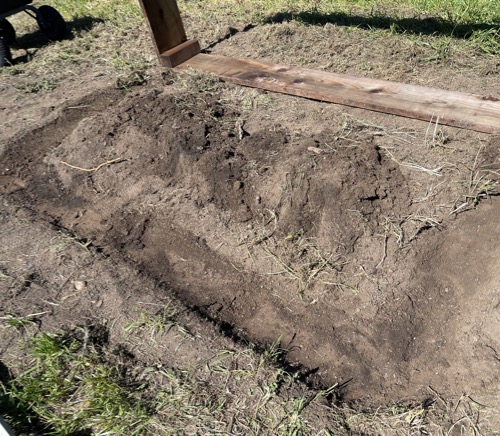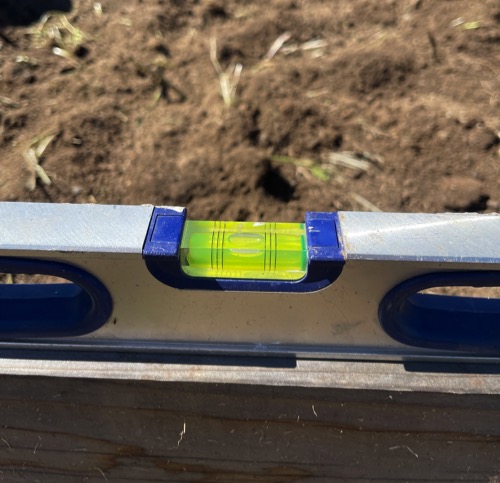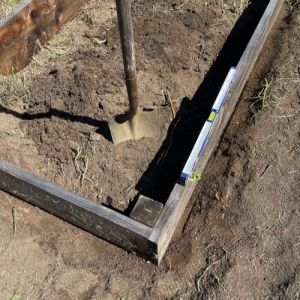Is Your Riased Bed Level? Tips for Optimal Plant Health
One Tip You Can’t Miss
Gardening enthusiasts and green-thumbed experts, welcome! Today, we’re delving into a crucial aspect of raised bed gardening that often goes overlooked – leveling your raised garden beds. I thought I’d bring some of my building experience out to the garden crowd, and focus on a topic near and dear to my heart – leveling. This might seem like a minor detail, but it’s a game-changer for your garden’s health and your ease of gardening.
Why Leveling Matters in Raised Bed Gardening
When putting a raised bed into your garden, the ground is typically not level. And if you’re building a raised bed, it’s very rare that it’s perfectly square. This can cause some issues down the line, especially when it comes to soil. Most gardeners use the top of the raised bed as the reference for flattening or raking the soil inside the structure. If it’s not level you can create water pools and other issues inside the bed that can be harmful to your plants. Here are some reasons to use a level on your new bed project:
Even Water Distribution
One of the key benefits of raised bed gardening is improved control over soil quality and moisture levels. However, this can quickly go awry if your bed isn’t level. Unleveled beds lead to uneven water distribution, causing some plants to drown while others thirst. Keeping your bed level ensures every plant gets its fair share of water, promoting lush, even growth throughout your garden.
Stable and Healthy Soil
Soil stability is crucial for robust plant growth. In sloped beds, soil erosion and displacement can occur, disrupting the delicate balance of nutrients and moisture needed for healthy plant roots. A level bed prevents this, maintaining a stable environment for your plants to thrive.
Optimized Plant Health
Plants are sensitive to their environment, and even slight changes can impact their health. Uneven beds can create micro-climates within your garden, leading to inconsistent growth and increased susceptibility to diseases. Leveling your bed helps provide consistent conditions that plants love.
Gardening Made Easy
An often-overlooked benefit of leveling your raised beds is the ease of maintenance it brings. A level bed means easier planting, weeding, and harvesting. It makes your gardening experience more enjoyable and less physically straining.
Aesthetics Count Too
Let’s not forget the visual appeal! A level raised bed garden looks neat, organized, and can enhance the overall aesthetic of your outdoor space.
How to Level Your Raised Garden Beds
1. Choose the Right Location
Before you start, pick a spot that naturally minimizes sloping. Make efforts to level the area to begin with, as this will make final leveling simple.This can save you effort in the long run, and give a great start to the leveling process.
2. Measure and Adjust
Use a level tool to check the bed’s balance, the longer the level the better, and a contractors level is great. To be more specific, use a Spirit Level which is a tool used to indicate how parallel (level) or perpendicular (plumb) a surface is relative to the earth. A spirit level gets its name from the mineral spirit solution inside the levels. Level’s have both horizontal and vertical “bubbles”, and you will use the center bubble to do the following:

I typically map out the outline of my bed, and dig a shallow ditch to lay the bed in, and then adjust from there.
Your goal is to center the ball by adding soil to the corners. Remember, there are two axes to level, and you typically need to go back and forth to achieve a flat plane of the top of your bed. Adjust the height by adding or removing soil underneath the corners of bed frame until you achieve a perfect level.

What is level? You want the bubble centered between the center lines. raise the side that indicates the direction you need to move the bubble to achieve a level set. Once its level, you can backfill the soil into your initial outline trench.
3. Consider Drainage
While leveling, ensure that your bed still has proper drainage to prevent waterlogging.
4. Regular Checks
Periodically check the levelness of your beds, as natural settling or erosion can occur over time.
5. Seek Professional Help if Needed
If you’re unsure or have a particularly challenging garden layout, don’t hesitate to seek advice from gardening professionals.
Conclusion
Leveling your raised garden beds is a simple yet crucial step in ensuring a thriving garden. It leads to healthier plants, easier maintenance, and a more visually appealing garden space. So, grab your tools, get leveling, and watch as your garden transforms into a more productive and beautiful space!
We hope this guide inspires you to perfect your gardening setup. Stay tuned for more gardening tips and tricks to keep your green space flourishing!
Recent Posts

The Power of Mounding: An Essential Gardening Technique for Healthy Plants

The Ultimate Guide to Philodendron Birkin – Care, Tips, and Benefits

Watering Plants – Indoor Edition

The Advantages of Built-Up Garden Beds: A Gardener’s Best Friend

The Secret Weapon for Lush Blooms: How to Create the Perfect Fertilizer Schedule











You must be logged in to post a comment.